
IEEE Journal of Electromagnetics RF and Microwaves in Medicine and Biology
Scope & Guideline
Advancing healthcare through electromagnetics.
Introduction
Aims and Scopes
- Electromagnetic Sensing Technologies:
Research on various electromagnetic sensing technologies, including radar, microwave imaging, and RF sensors, aimed at non-invasive diagnostics and health monitoring. - Microwave and RF Applications in Medicine:
Studies focusing on the application of microwave and RF technologies in medical procedures, such as thermal ablation, hyperthermia treatment, and imaging techniques for cancer detection. - Biomedical Device Development:
Development and characterization of biomedical devices that utilize electromagnetic principles, including implantable devices for health monitoring and wireless power transfer systems. - Modeling and Simulation:
Advanced modeling and simulation techniques to predict electromagnetic interactions with biological tissues, including computational methods for assessing safety and efficacy in medical applications. - Interdisciplinary Approaches:
Integration of various scientific disciplines, such as physics, engineering, and biology, to address complex medical challenges through innovative electromagnetic solutions.
Trending and Emerging
- Wearable Health Monitoring Technologies:
There is a significant increase in research dedicated to wearable technologies that monitor vital signs and health metrics, emphasizing remote health management and continuous monitoring. - Machine Learning and AI Integration:
The use of machine learning and artificial intelligence in processing and analyzing biomedical data is becoming increasingly prominent, enhancing diagnostic accuracy and operational efficiency. - Microwave-Based Therapeutic Techniques:
Research on microwave-based therapeutic techniques, such as hyperthermia and ablation, is expanding, indicating a growing interest in using these technologies for effective treatment modalities. - Non-Contact Measurement Methods:
Emerging trends show a heightened focus on non-contact measurement methods utilizing radar and electromagnetic fields for vital sign detection and health monitoring, minimizing patient discomfort. - Advanced Material Development for Biomedical Applications:
There is a trend towards the exploration of novel materials for medical devices, including flexible and stretchable materials, which enhance device functionality and patient wearability.
Declining or Waning
- Traditional Imaging Techniques:
There appears to be a reduced emphasis on traditional imaging methods that do not leverage the latest advancements in microwave and RF technologies, as newer techniques gain traction. - Invasive Measurement Techniques:
Research involving invasive measurement techniques is declining, possibly due to a growing preference for non-invasive or minimally invasive approaches that enhance patient comfort and safety. - Single-Function Devices:
There is a waning interest in the development of single-function devices, with a shift towards multi-functional biomedical devices that can perform various tasks simultaneously.
Similar Journals
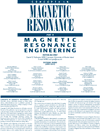
CONCEPTS IN MAGNETIC RESONANCE PART B-MAGNETIC RESONANCE ENGINEERING
Advancing Magnetic Resonance Engineering for a Healthier Tomorrow.CONCEPTS IN MAGNETIC RESONANCE PART B-MAGNETIC RESONANCE ENGINEERING is a premier journal published by WILEY-HINDAWI, dedicated to advancing the field of magnetic resonance engineering. With an ISSN of 1552-5031 and E-ISSN 1552-504X, this journal offers an Open Access platform since 2022, ensuring that research is freely accessible to scholars worldwide. Covering a broad spectrum of applications in medicine, radiology, nuclear medicine, and imaging, it serves as a key resource for professionals looking to stay updated with the latest advancements and innovations in the field. The journal enjoys notable rankings in various categories, including a rank of #137 in Medicine and #26 in Health Professions within Scopus, reflecting its importance and influence in both academic and clinical settings. As a vital conduit for cutting-edge research, CONCEPTS IN MAGNETIC RESONANCE PART B is committed to fostering the growth of knowledge while addressing the critical challenges and technological enhancements within magnetic resonance methodologies. Researchers, professionals, and students can expect to find comprehensive articles that adhere to high scientific standards, promoting discourse and collaboration across disciplines.
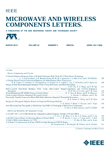
IEEE MICROWAVE AND WIRELESS COMPONENTS LETTERS
Delivering Breakthroughs in Electrical Engineering and Applied Physics.IEEE Microwave and Wireless Components Letters, published by the esteemed IEEE - Institute of Electrical and Electronics Engineers, stands as a crucial platform for disseminating innovative research in the realms of microwave and wireless technology. With an impact factor that emphasizes its significance in the academic community, the journal has achieved notable rankings, including Q1 in Condensed Matter Physics and Q2 in Electrical and Electronic Engineering for 2023. Covering an extensive range of topics pertinent to practitioners and theorists alike, it aims to provide rapid publication of short, concise letters reporting on cutting-edge research findings that drive the field forward. Although coverage in Scopus has been discontinued, the journal remains an influential resource, reflecting its long-standing dedication to advancing electrical engineering and applied physics, thus making it an essential read for anyone invested in these dynamic disciplines.

INTERNATIONAL JOURNAL OF RF AND MICROWAVE COMPUTER-AIDED ENGINEERING
Advancing the Frontiers of RF and Microwave EngineeringInternational Journal of RF and Microwave Computer-Aided Engineering, published by Wiley, is a leading peer-reviewed journal dedicated to advancing research in the realms of radio frequency, microwave engineering, and computer-aided design. With an ISSN of 1096-4290 and an E-ISSN of 1099-047X, this journal plays a pivotal role in the dissemination of innovative methodologies and state-of-the-art developments within these dynamic fields. Recognized within the Q3 category across three engineering and computer science domains as of 2023, it garners attention for its substantial contributions, ranking 40th among 106 in Computer Graphics and Computer-Aided Design and 327th among 797 in Electrical and Electronic Engineering according to Scopus metrics. Emphasizing its commitment to knowledge sharing, the journal provides a range of access options, including Open Access, to ensure the research is readily available to a global audience. Covering years from 1996 to 2024, the International Journal of RF and Microwave Computer-Aided Engineering continues to be an indispensable resource for researchers, professionals, and students in pursuit of excellence in engineering and applied sciences.

Radiophysics and Quantum Electronics
Bridging Theory and Application in RadiophysicsRadiophysics and Quantum Electronics is a leading scholarly journal published by SPRINGER, dedicated to advancing knowledge in the fields of radiophysics and quantum electronics. With a rich publication history dating back to 1967 and covering anticipated insights up to 2024, the journal serves as a crucial resource for researchers engaged in the exploration of areas such as Astronomy and Astrophysics, Electrical and Electronic Engineering, and Nuclear and High Energy Physics. Although it is classified in lower quartiles in several categories, its ongoing commitment to quality research and critical advancements adds invaluable knowledge to the scientific community. The journal does not currently offer open access options, allowing for traditional publication standards that uphold rigor and academic integrity. Researchers, professionals, and students alike can benefit from the comprehensive articles and studies published within its pages, making Radiophysics and Quantum Electronics an essential addition to any academic library focused on the nuances of modern physics and engineering.
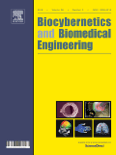
Biocybernetics and Biomedical Engineering
Charting New Territories in Biomedical AdvancementsBiocybernetics and Biomedical Engineering, published by ELSEVIER in the Netherlands, is a prestigious journal that stands at the forefront of the intersecting fields of biomedical engineering and artificial intelligence. With an impressive Impact Factor that places it in the Q1 category for Biomedical Engineering, this journal not only ranks 17th out of 303 in Scopus but also boasts a remarkable percentile ranking of 94th, highlighting its influence and relevance within the scientific community. Since its inception in 2008, Biocybernetics and Biomedical Engineering has aimed to publish cutting-edge research that integrates principles of cybernetics with technological advancements in health care, thereby fostering innovations that improve patient outcomes. Dedicated to advancing knowledge in biomedical technology, the journal serves as a vital resource for researchers, professionals, and students seeking to explore the latest developments and methodologies in the field.

Biomedical Engineering-Biomedizinische Technik
Advancing Biomedical Innovation for a Healthier TomorrowBiomedical Engineering-Biomedizinische Technik, published by WALTER DE GRUYTER GMBH, serves as a pivotal platform for advancing knowledge in the field of biomedical engineering and medicine since its inception in 1956. With an ISSN of 0013-5585 and an E-ISSN of 1862-278X, this peer-reviewed journal offers accessible insights into innovative research and technological advancements that are reshaping healthcare practices and biomedical applications. Although rated in the Q3 category for both Biomedical Engineering and Miscellaneous Medicine in 2023, the journal's impact factor and growing reputation demonstrate its vital role in fostering academic dialogue and collaboration. The journal is based in Germany, while its scope encompasses a diverse range of topics, thus bridging the gap between engineering and medical disciplines. Researchers, professionals, and students alike are encouraged to engage with the content that not only highlights contemporary challenges but also presents groundbreaking solutions in biomedical technology.
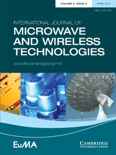
International Journal of Microwave and Wireless Technologies
Connecting Ideas in the World of Wireless Technologies.International Journal of Microwave and Wireless Technologies is a leading academic journal published by Cambridge University Press, dedicated to the advancement of knowledge in the fields of microwave and wireless technologies. Since its inception in 2009, this journal has established itself as a crucial platform for researchers, professionals, and students involved in Electrical and Electronic Engineering, currently positioned in the Q3 quartile as per the 2023 category rankings. With an ISSN of 1759-0787 and an E-ISSN of 1759-0795, it facilitates the dissemination of high-quality research articles that address emerging trends and challenges in microwave and wireless communications. The journal is committed to fostering innovation and collaboration within the global scientific community, aiming to publish significant contributions that appeal to both academic and industrial perspectives. Its Scopus ranking of 382 out of 797 highlights its relevance and impact in the engineering domain. While currently not an open-access journal, it provides various access options for its readership, ensuring that cutting-edge research remains accessible to all.

Advances in Radio Science
Fostering Collaboration in Electronic AdvancementsAdvances in Radio Science, published by COPERNICUS GESELLSCHAFT MBH, is a leading open-access journal established in 2003, dedicated to the rapid dissemination of high-quality research in the field of radio science, particularly focusing on advancements in electrical and electronic engineering. With an ISSN of 1684-9965 and an E-ISSN of 1684-9973, this journal is indexed and provides an avenue for researchers to contribute to the latest developments and innovations within the domain. Despite its current Q4 ranking in the Electrical and Electronic Engineering category, its commitment to open access ensures that all published articles are freely available to a global audience, fostering collaboration and knowledge sharing among engineers, researchers, and students alike. Situated in Göttingen, Germany, the journal continues to evolve and expand its reach, with content converging until 2024, emphasizing its relevance in a rapidly changing technological landscape. Whether you're a seasoned researcher or an emerging scholar, Advances in Radio Science invites you to explore the frontiers of radio science and contribute to its growing body of knowledge.
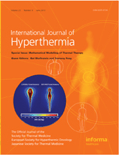
INTERNATIONAL JOURNAL OF HYPERTHERMIA
Driving discoveries in hyperthermia for improved patient outcomes.INTERNATIONAL JOURNAL OF HYPERTHERMIA, published by Taylor & Francis Ltd, is a leading peer-reviewed journal dedicated to advancing the field of hyperthermia and its applications in medical science, particularly within cancer research and related disciplines. With an ISSN of 0265-6736 and an E-ISSN of 1464-5157, this journal has been a vital resource since its establishment in 1985, offering a platform for innovative research and clinical applications aimed at improving treatment outcomes. The journal is recognized with a Q2 category ranking in several fields, including Cancer Research and Physiological Medicine, reflecting its significant contribution to scientific knowledge and clinical practices. Furthermore, it has been Open Access since 2019, ensuring that cutting-edge research is accessible to a global audience. By facilitating the exchange of ideas and fostering collaborations among researchers, professionals, and students, the INTERNATIONAL JOURNAL OF HYPERTHERMIA serves as an essential resource in the quest to exploit hyperthermia’s full potential in therapeutic settings.

OPTICS AND SPECTROSCOPY
Transforming Insights into Light-Matter DynamicsOptics and Spectroscopy is a pivotal peer-reviewed journal published by Pleiades Publishing Inc, focusing on the intricate fields of atomic and molecular physics, as well as optics. Established in 1972, and enjoying a legacy of convergence periods that reinforce its commitment to the evolving landscape of these scientific domains, the journal aims to disseminate high-quality research that advances our understanding of light-matter interactions, electronic materials, and spectroscopic techniques. Despite its current Q4 categorization in both the Atomic and Molecular Physics and Electronic, Optical and Magnetic Materials fields, with corresponding Scopus rankings reflecting its developing influence, the journal remains a valuable resource for researchers and professionals seeking to publish their findings, explore new methodologies, and connect with a community dedicated to innovation in optics. Although there is currently no open access option, the journal's expansive readership and its stability in publication over the decades make it an important platform for both established and emerging researchers in the field.